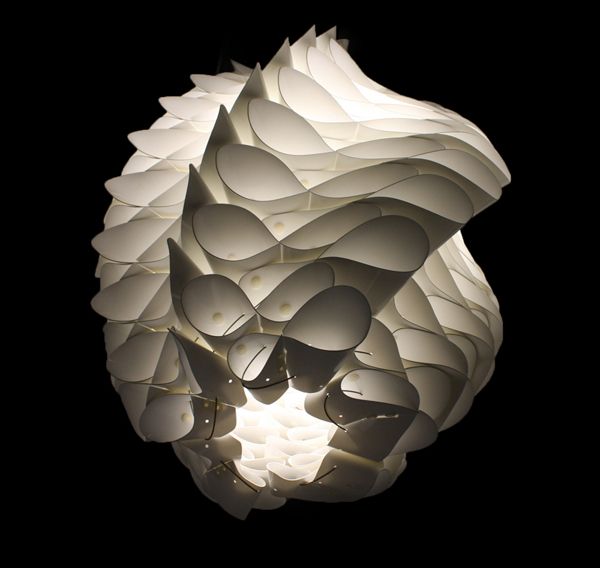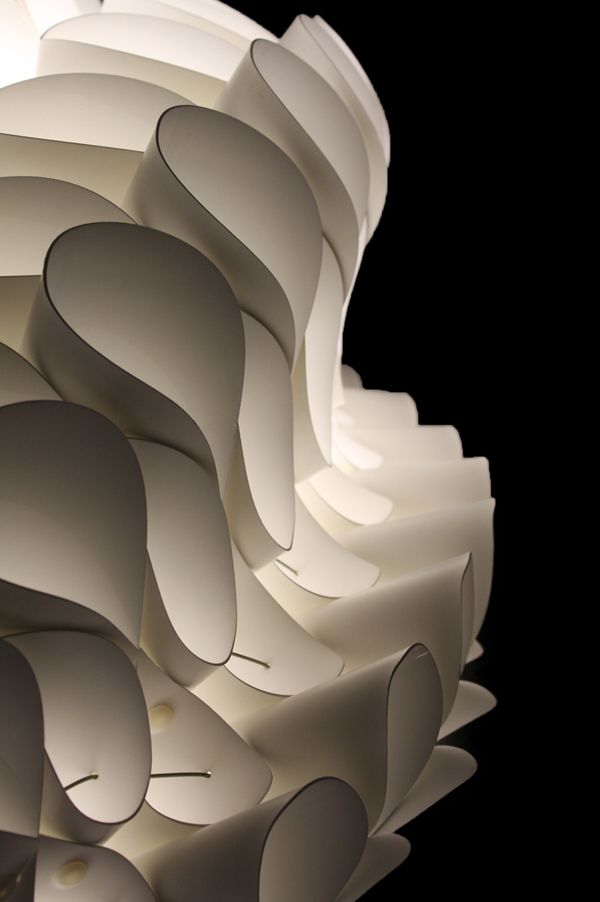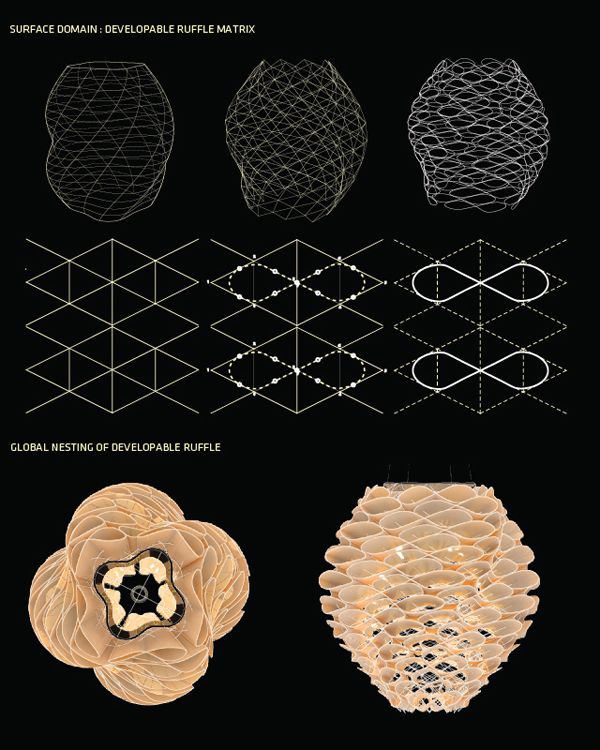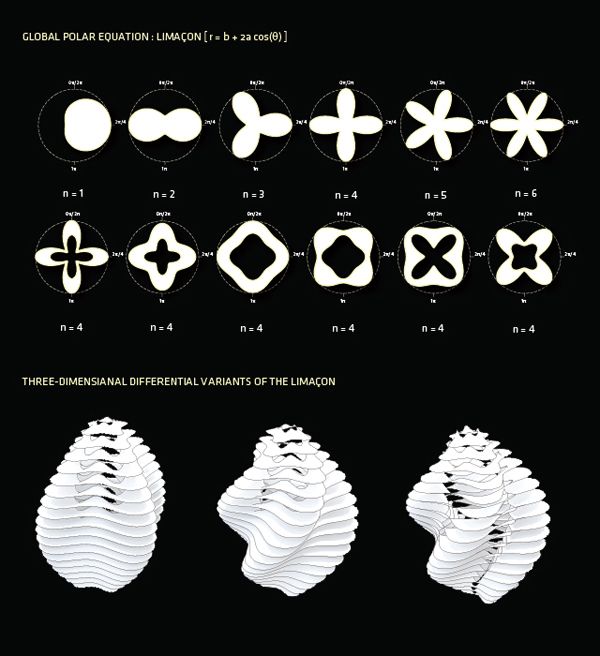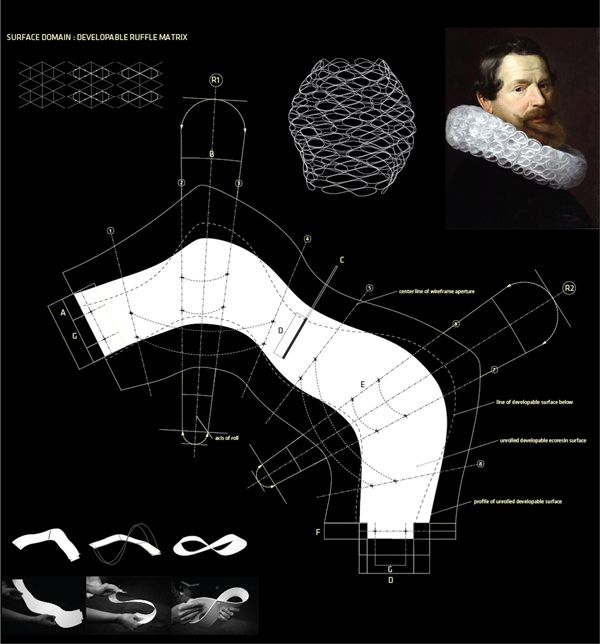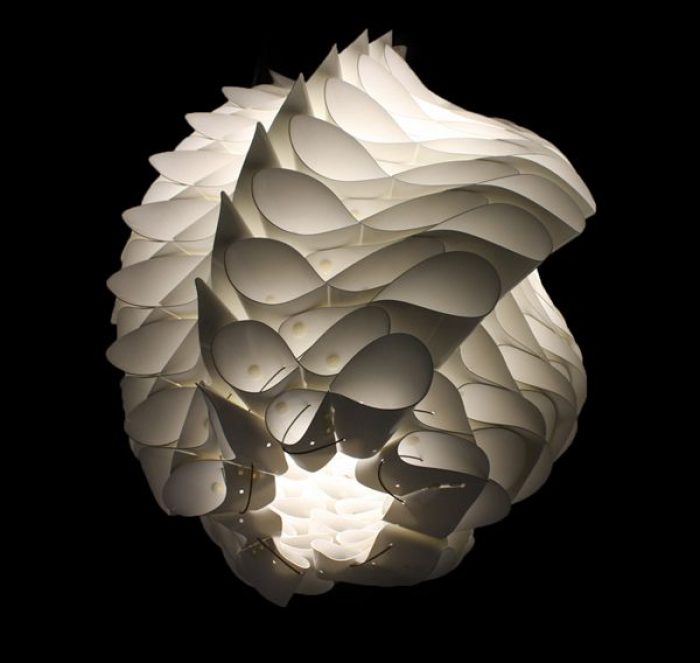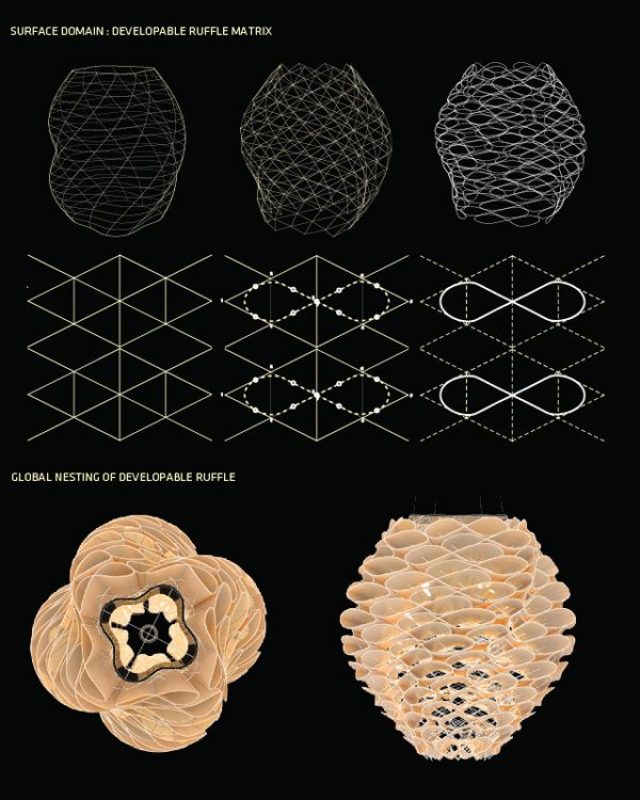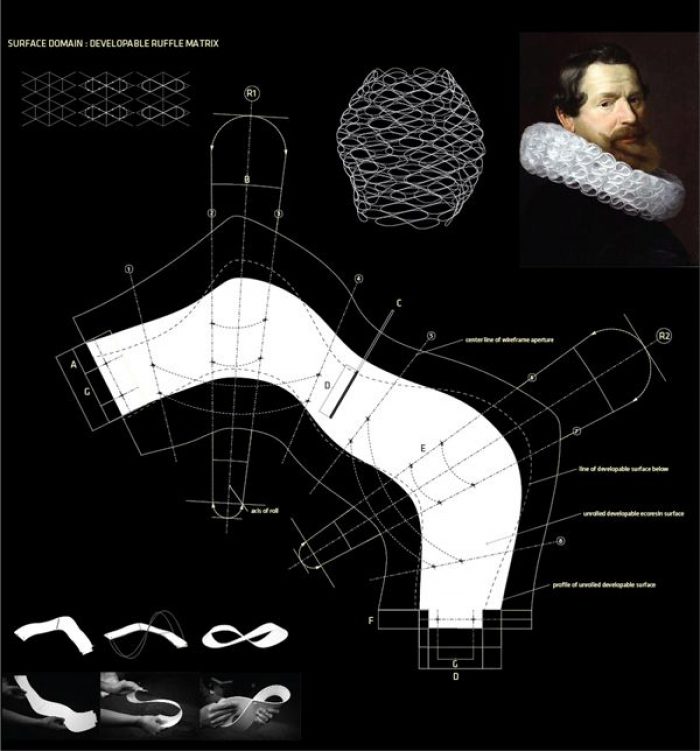I have always believed there is an unbreakable relationship between architecture and installation design – and in particular I am looking at Andrew Saunders’ lighting design piece. The difference between architectural objects and those named installations is in their scales, yet the technique, execution and most importantly – the creative design process, somehow is an essential part for both types. Andrew Saunder’s Luminiscent Limaçon lamp installation is nominated as the winning design for the 2011 Design Fabrication competition, in the Association for Computer Aided Design in Architecture – ACADIA held in Banff, Canada.
 It is Saunders’ expertise as a practicing architect that helps him create a revival of the Dutch ruff – a decorative linen collar, yet what he does is to research on the methodology and fabrication used for the 1600’s fashion garment and transform its aesthetics into a 21st century light-functional object. It is fascinating to investigate Saunders’ research links and discover he has had major influence from Albrech Dürer’s ‘Instruction in Measurement’, Blaise Pascal’s definition of the limaçon, and modern design morphology. At the kernel of his research stands the Flemish Baroque painter Cornelis de Vos and his immaculate portraiture.
It is Saunders’ expertise as a practicing architect that helps him create a revival of the Dutch ruff – a decorative linen collar, yet what he does is to research on the methodology and fabrication used for the 1600’s fashion garment and transform its aesthetics into a 21st century light-functional object. It is fascinating to investigate Saunders’ research links and discover he has had major influence from Albrech Dürer’s ‘Instruction in Measurement’, Blaise Pascal’s definition of the limaçon, and modern design morphology. At the kernel of his research stands the Flemish Baroque painter Cornelis de Vos and his immaculate portraiture.
With reference to fine arts and the chiaroscuro painting technique, Saunders’ approach is added a digital fabrication method for the modernization of the Dutch ruff. If taken a forensic look, the lamp consists of continuous loops formed on the principle of sectioning – the technique for building most efficient for Saunders’ project. Sectioning allows for a digital generation of the forms and at first they are improvisational but with the use of Blaise Pascal’s Limaçon curve, the project turns into an equation-based parametric system of segments.
 Hence, Saunders sets the trend for an emerging design process of multiplicity, characterized by an intelligence at the heart of which is the element of repetition. Simply put, Mathematics is beautiful and Saunders interprets this notion by bringing out two qualities of the designed lamp: it seems both as an ephemeral reflective source and exists in the three-dimensional space as a real tangible object. Inspired by the chiaroscuro painting technique where there is a use of strong contrasts between light and dark, Saunders creates periodic foldings as shown on the diagram in order to re-perform the chiaroscuro effect in a 3D way by capturing light in the foldings and this is what creates the translucent ruffle quite reminiscent of the fashion garment from 1600’s.
Hence, Saunders sets the trend for an emerging design process of multiplicity, characterized by an intelligence at the heart of which is the element of repetition. Simply put, Mathematics is beautiful and Saunders interprets this notion by bringing out two qualities of the designed lamp: it seems both as an ephemeral reflective source and exists in the three-dimensional space as a real tangible object. Inspired by the chiaroscuro painting technique where there is a use of strong contrasts between light and dark, Saunders creates periodic foldings as shown on the diagram in order to re-perform the chiaroscuro effect in a 3D way by capturing light in the foldings and this is what creates the translucent ruffle quite reminiscent of the fashion garment from 1600’s.
